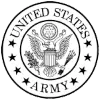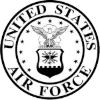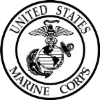Available 24/7
Professional Instruction
Free Training Materials






Course Details
The Automating Administration with Windows PowerShell - 10961 course is a 5-day course that is intended for students looking to learn the core knowledge and skills needed to use Windows PowerShell for administering and automating administration of Windows servers.
Students will learn how to build scripts to accomplish advanced operations such as automating repetitive tasks and generating reports. The course provides prerequisite skills supporting a broad range of Microsoft products, including Windows Server, Windows Client, Microsoft Exchange Server, Microsoft SharePoint Server, Microsoft SQL Server, System Center, and more. This course will not focus on any one of those products, although Windows Server, which is the common platform for all of those products, will serve as the example for the techniques taught in the course.
Topics covered in the course include:
- Describing the functionality of Windows PowerShell and use it to run and find basic commands.
- Identifying and running cmdlets for server administration.
- Working with Windows PowerShell pipeline.
- Describing the techniques Windows PowerShell pipeline uses.
- Using PSProviders and PSDrives to work with other forms of storage.
- Querying system information by using WMI and CIM.
- Working with variables, arrays, and hash tables.
- Writing basic scripts in Windows PowerShell.
- Writing advanced scripts in Windows PowerShell.
- Administering remote computers.
- Using background jobs and scheduled jobs.
- Using advanced Windows PowerShell techniques.
Target Student:This course is designed for IT Professionals who are already experienced in general Windows Server and Windows Client administration, and who want to learn more about using Windows PowerShell for administration. The course is also ideal for IT Professionals already experienced in server administration, including Exchange Server, SharePoint Server, SQL Server, System Center, and others.
Students should possess the following Experience working before attending the course:
- Experience working with Windows networking technologies and implementation.
- Experience working with Windows Server administration, maintenance, and troubleshooting.
- Experience working with Windows Client administration, maintenance, and troubleshooting.
- Students who attend this training can meet the prerequisites by obtaining equivalent knowledge and skills through practical Experience working as a Windows system administrator. No prerequisite courses are required.
Section 1: Getting started with Windows PowerShell
This section will introduce students to Windows PowerShell and provide an overview of the product’s functionality. The section shows students how to open and configure the shell for use and how to run commands within the shell. The section also introduces the built-in Help system in Windows PowerShell.
Topics :
Overview and background of Windows PowerShell
Understanding command syntax
Finding commands
Lab :
Configuring Windows PowerShell
Configuring the Windows PowerShell console
Configuring the Windows PowerShell ISE application
Lab :
Finding and running basic commands
Finding commands
Running commands
Working with the About files
Section 2: Cmdlets for administration
This section introduces students to the cmdlets commonly used for administration. While students can search for cmdlets each time they need to accomplish a task, it is more efficient to have at least a basic understanding of the cmdlets available for system administration.
Topics :
Active Directory administration cmdlets
Network configuration cmdlets
Other server administration cmdlets
Lab :
Windows Administration
Create and managing Active Directory objects
Configuring network settings on Windows Server
Create a web site
Section 3: Working with the Windows PowerShell pipeline
This section introduces the pipeline feature of Windows PowerShell. Although the pipeline feature is included in several command-line shells such as the command prompt in the Windows operating system, the pipeline feature in Windows PowerShell provides more complex, more flexible, and more capable functionalities compared to other shells. This section provides students with the skills and knowledge that will help them use the shell more effectively and efficiently.
Topics :
Understanding the pipeline
Selecting, sorting, and measuring objects
Filtering objects out of the pipeline
Enumerating objects in the pipeline
Sending pipeline data as output
Lab :
Working with the pipeline
Selecting, sorting, and displaying data
Lab :
Filtering objects
Filtering objects
Lab :
Enumerating objects
Enumerating objects
Lab :
Sending output to a file
Exporting user information to a file
Section 4: Understanding how the pipeline works
This section shows students how Windows PowerShell passes objects from one command to another in the pipeline. The shell provides two techniques that they can use. Knowing how these techniques work, and which one will be used in a given scenario, lets students construct more useful and complex command lines.
Topics :
Passing the pipeline data
Advanced considerations for pipeline data
Lab :
Working with pipeline parameter binding
Predicting pipeline behaviour
Section 5: Working with PSProviders and PSDrives
This section introduces the PSProviders and PSDrives adapters. A PSProvider is basically a Windows PowerShell adapter that makes some form of storage resemble a disk drive. A PSDrive is an actual connection to a form of storage. Students can use these two adapters to work with various forms of storage by Working with the same commands and techniques that they use to manage the file system.
Topics :
Working with PSProviders
Working with PSDrives
Lab :
Working with PSProviders and PSDrives
Create files and folders on a remote computer
Create a registry key for your future scripts
Create a new Active Directory group
Section 6: Querying system information by Working with WMI and CIM
This section introduces students to two parallel technologies: Windows Management Instrumentation (WMI) and Common Information Model (CIM). Both these technologies provide local and remote access to a repository of management information including access to robust information available from the operating system, computer hardware, and installed software.
Topics :
Understanding WMI and CIM
Querying data by Working with WMI and CIM
Making changes with WMI/CIM
Lab :
Working with WMI and CIM
Querying information by Working with WMI
Querying information by Working with CIM
Invoking methods
Section 7: Working with variables, arrays, and hash tables
This section provides students with the skills and knowledge required to use variables, arrays, and hash tables in Windows PowerShell.
Topics :
Working with variables.
Manipulating variables.
Manipulating arrays and hash tables.
Lab :
Working with variables
Working with variable types
Working with arrays
Working with hash tables
Section 8: Basic scripting
This section shows students how to package a Windows PowerShell command in a script. Scripts allow students to perform repetitive tasks and more complex tasks than cannot be accomplished in a single command.
Topics :
Introduction to scripting
Scripting constructs
Importing data from files
Lab :
Basic scripting
Setting a script
Processing an array with a ForEach loop
Processing items by Working with If statements
Create a random password
Create users based on a CSV file
Section 9: Advanced scripting
This section introduces students to more advanced techniques that you can use in scripts. These techniques includes gathering user input, reading input from files, documenting scripts with help information and error handling.
Topics :
Accepting user input
Overview of script documentation
Troubleshooting and error handling
Functions and sections
Lab :
Accepting data from users
Querying disk information from remote computers
Updating the script to use alternate credentials
Documenting a script
Lab :
Implementing functions and sections
Create a logging function
Adding error handling to a script
Converting a function to a section
Section 10: Administering Remote Computers
This section introduces students to the Windows PowerShell remoting technology that enables students to connect to one or more remote computers and instruct them to run commands on their behalf.
Topics :
Working with basic Windows PowerShell remoting
Working with advanced Windows PowerShell remoting techniques
Working with PSSessions
Lab :
Working with basic remoting
Enabling remoting on the local computer
Performing one-to-one remoting
Performing one-to-many remoting
Lab :
Working with PSSessions
Working with implicit remoting
Managing multiple computers
Section 11: Working with background jobs and scheduled jobs
This section provides information about the job features of Windows PowerShell. Jobs are an extension point in Windows PowerShell, and there are many different kinds of jobs. Each kind of job can work slightly differently, and has different capabilities.
Topics :
Working with background jobs
Working with scheduled jobs
Lab :
Working with background jobs and scheduled jobs
Starting and managing jobs
Create a scheduled job
Section 12: Working with advanced Windows PowerShell techniques
This section covers several advanced Windows PowerShell techniques and features. Many of these techniques and features extend functionality that students have learned about in previous sections. Some of these techniques are new and provide additional capabilities.
Topics :
Create profile scripts
Working with advanced techniques
Lab :
Practicing advanced techniques
Create a profile script
Verifying the validity of an IP address
Reporting disk information
Configuring NTFS permissions
Create user accounts with passwords from a CSV file
Lab :
Practicing script development (optional)
Please check the course description to find prerequisite information.
MOC On-Demand: 10961-Automating Administration with Windows PowerShell
On-Demand Training Course
90/month licence
- 24/7 Access
- Hands-On Practice Exercises
- Free Repeats
- Professional Instruction
Testimonials
This was the class I needed.
The instructor Jeff took his time and made sure we understood each topic before moving to the next. He answered all of our questions, and I don't know about the rest of the students, but was very pleased with this experience.
I finally understand how to use Excel.
-Amanda T (Yale New Haven Hospital).
Great class!
We were able to cover a lot of information in one day without getting overwhelmed.
-Maria R (Microsoft).
Free Repeats
Learn At Your Pace
No Travel
Professional Instruction
Affordable Pricing
Group Discounts

